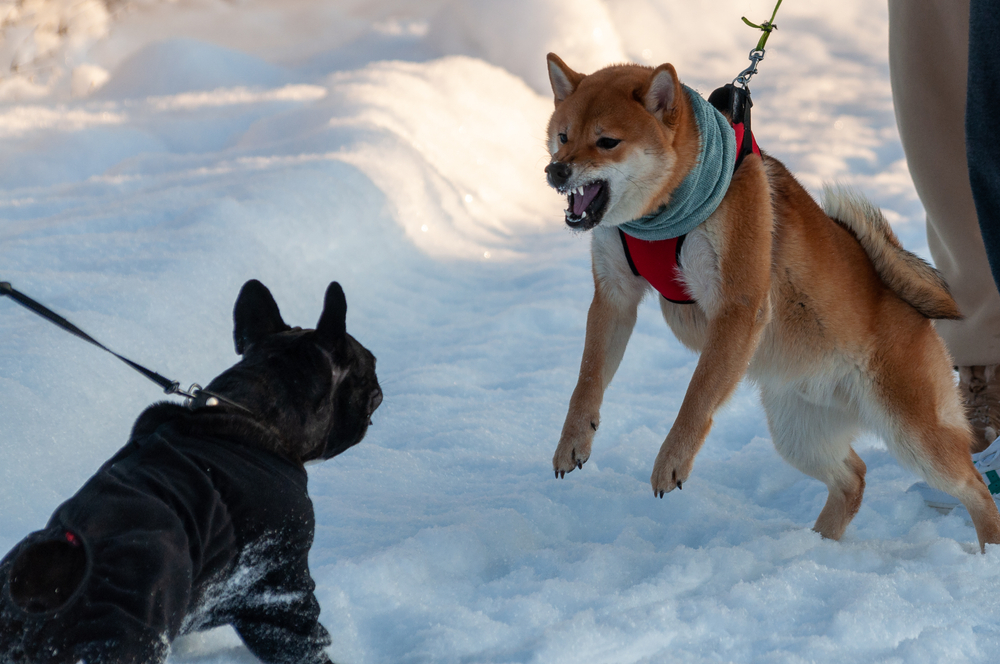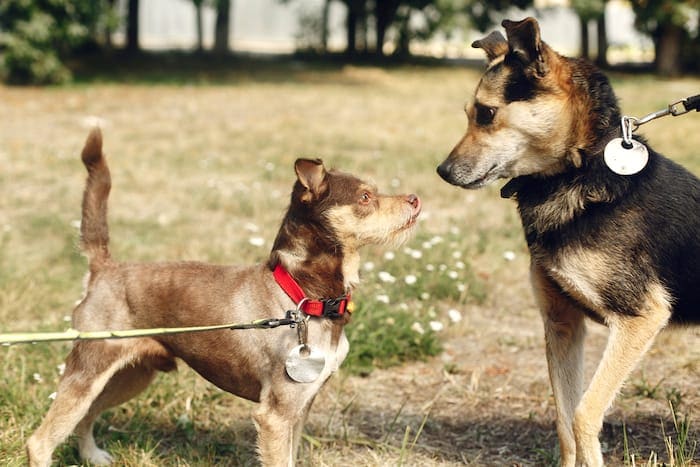
If let loose many reactive dogs would not display such energetic outbursts so we have to be careful when labeling a dog aggressive. In many cases, the reactivity is also related to being on leash.

In every situation, whether we understand it or not, somehow, the dog has developed the perception that the object of their reaction is a potential threat. Other times, even older well-behaved dogs can develop such behaviors when circumstances join together to create the ‘perfect storm’. Friendly little puppies can evolve into reactive adolescents. Genetics, poor socialization, hormones, neurophysiological makeup as well as experience can all be factors leading to such emotions. At the core of the reaction, lies stress, anxiety or fear. It doesn’t matter how assertive the dog may seem. It’s often best to stay calm or even adopt the Jolly Routine coupled with redirection and rewards, to immediately abort the dog’s reaction.

With repetitions, the frustration can turn to reactivity or aggression. While trying to inhibit the unruly display, the guardian might unwillingly teach the dog that ‘bad things happen’, such as yelling or leash popping, when in presence or people or dogs. Sometimes, the frustration of being on a leash will also lead to such behaviors.
Training reactive dog on leash full#
If left untreated, even the mildest reaction may evolve into a full display of lunging, snarling and barking. Many of the signs listed above would not qualify as ‘aggressive’ but will often develop into more problematic behaviors. Hyper-excitability, barking, whining, lunging, pacing, panting hyper-vigilance, difficulty calming down or responding to their guarding are all different expressions of the dog’s emotional state when in presence of the object of their anxiety or frustration.
Training reactive dog on leash how to#
In this article, we won’t cover all the different categories of canine reactivity, as the subject is vast, but will mainly focus on the dogs’ emotional reactions when on leash, and how to manage and treat them. Left untreated however, reactivity can lead to aggression. While we’re quick to label many of the dog’s behaviors as aggressive, most dogs are simply reactive, in other words, they overreact to certain stimuli in the environment. Once we understand some of the underlying factors, with planned management and training sessions, we can help our pooch relax. It’s easy to see how frustrated or desperate owners of such dogs can feel like the only way out of this embarrassing and sometimes dangerous predicament, is to surrender the dog. Walks can quickly turn into a succession of adrenaline rushes for both our canine and ourselves, making it increasingly more difficult to go out. If that wasn’t enough, owning and taking out such a dog raises legitimate concerns for the safety of those we encounter. Not only do we have to face the challenge of holding onto the lunging and barking beast, but we also have to put up with the shame of the event.

It’s hard to enjoy a walk in the park, when we know our beloved companion can suddenly turn into Cujo at the first sight of a strange dog or a jogger.


 0 kommentar(er)
0 kommentar(er)
